The training
Image: JeffChristiansen, Flickr (license)
So being PhotoPass Photographer can't be that hard, right? Get a camera, take a picture, get paid. Wrong actually. There is a lot of training that each photographer receives, especially if they are in a special location.
I had six full days of classroom training before being sent out on my own. The first day was the legendary Traditions orientation that every new Cast Member has to go through. In a way, it's a fairly basic company training class, although it did include some Disney magic, like when Mickey Mouse comes into the classroom at the end of the day to present the class's name tags to them (seriously). The next day was an introduction to the entertainment department. This was a smaller class and only included photographers, character attendants, character "friends," and any other members of the entertainment department. Both classes taught the importance of Disney customer service and the specific language they like you to use. Also, both classes were taught at Disney University and included a field trip to the Magic Kingdom via the Utilidors! Day One and you get to walk under Cinderella's Castle!
The next four days were PhotoPass specific training. This is where I learned the technical parts of the camera and how to set all the necessary settings. I also learned how to get the perfect icon shot. A quick definition - an "icon" is usually one of the park's landmarks, such as Cinderella Castle or Spaceship Earth. You'll also find photographers taking pictures in front of other secondary locations, like the Twilight Zone Tower of Terror in Disney's Hollywood Studios or Expedition Everest in Disney's Animal Kingdom. To be truthful, there is a lot of skill in making sure that there is a good icon-to-guest ratio in the photo. You never want Cinderella's Castle to be too big or too small behind the guest, nor do you want a tall guest to completely block the icon.
The PhotoPass trainers also stressed that there are a specific series of shots you should take. If you ever look back at your PhotoPass Photos and are surprised to see three to four photos every time you stop, there is a reason behind it. When a guest approaches a photographer for a photo, the photographer is supposed to first get a primary photo, which is a portrait photo of the guest from the mid-calf up, including the icon. The second photo should then be a landscape, with just the family from the waist up. The third is an action-type photo, where the photographer will ask the family to pose in a certain way. For example, at Disney's Hollywood Studios the photographer might ask the guest to make a scared face in front of the Tower of Terror. The idea is that the family will have several photos in that one location, which is especially great if they choose to only print a few and want a variety of choices.
Image: Disney
It is in those four days of training that new photographers get to go into the parks and practice taking pictures under the eye of their trainer. This field work is also great in training the photographers how to troubleshoot for equipment problems that may occur in the parks. It also helps them get comfortable with taking photos and interacting with guests in a low-risk situation.
After all that training, the photographers are sent off into the world on their own for the first time. However, their training is far from over. Soon the photographers are scheduled for another training session (usually for a few hours as part of a longer shift) that combines night-time photography and tripod use. While it seems fairly basic, there are certain techniques for getting a photo to look good at night, as well as setting up the tripod correctly. Next comes training on the view station and on the Magic Shots. While it may seem easy, Magic Shots do require some training, as the photos need to be taken in a very specific way. What's nice about this training is that the trainer is constantly sending the photographer backstage to a computer so they can see how their photos look with the Magic Shot imposed. While it may seem simple, it can also be very easy to mess up a nice family photo, so the training is necessary. The view stations can also be occasionally challenging, so a thorough training session is appreciated.
Image: Disney
Another important training session is the day-long character training. Until then, the photographers can only be "in the streets" and take icon photos. Most character training is in Epcot, where there is a good mix of face and fur characters. The first part of training is in the classroom where photographers learn that there is in fact a method to the madness. The photographers, characters, and character attendants are taught a specific system of getting the guests in and making their interaction the best it can be. First, the guest should walk in and go right in for a character hug. Second, they should get their autograph book signed. Third, they interact with the character in some other way (like if a character notices a birthday button and wishes them a happy birthday). Finally, it's time for the group photos. The photographer should be snapping away the whole time, although not being aggressive or taking too many. Of course, the photo interactions don't always work that way. But when the Cast Members subtly encourage the guests to go in that order, the whole process goes quicker and smoother.
Image: Disney
After that, the average PhotoPass Photographer can be scheduled a shift in just about every location in every park. In fact, just because a photographer is assigned to one park doesn't mean they can't pick up an extra shift in another park. There have been times when I've taken photos of a family in Disney's Animal Kingdom just to see them the next day at Epcot! However, each park does have one or two extra locations that need special training.
If a photographer wants to work or is scheduled at any of the water parks or at a resort with character dining or a dinner show they do require extra training. For the resorts, there is a whole other system in place, from greeting the guests, to arranging them in front of the backdrop, to actually taking the picture. The same is true for character meals in the parks where photos are taken, like Cinderella's Royal Table in Magic Kingdom and Akershus Royal Banquet Hall at Epcot. Other areas with special training include both Bibbidi Bobbidi Boutique locations, Jedi Training Academy at Disney's Hollywood Studios, and Magic Words with Mickey Mouse at Magic Kingdom. Although you may not be able to notice, each location requires the photographer to do specific things in order to get the pictures just right. For example, if you ever look at the photos taken during the Jedi Training Academy, you may notice that there is a certain rhythm to the photos. When each kid goes up to fight Darth Vader, the photographer always takes a close-up of the kid's face and then a few photos of them fighting. This is done so the parents can tell, when looking at the hundreds of photos taken during the show, which kid is actually fighting and when their child is done with his or her turn.
Image: Disney
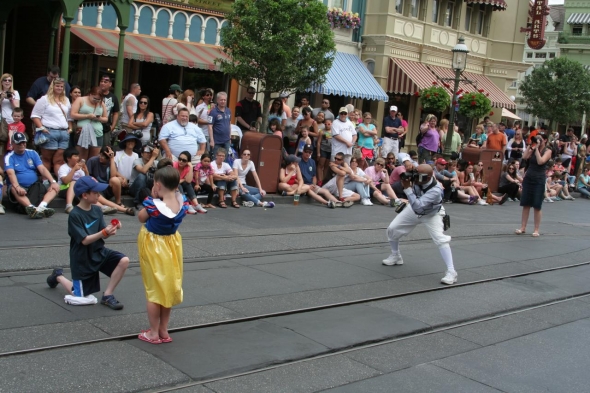
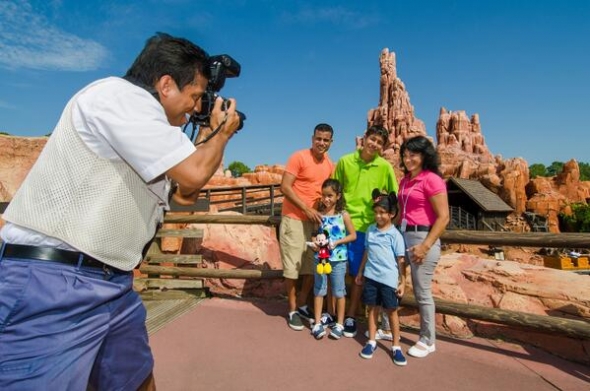
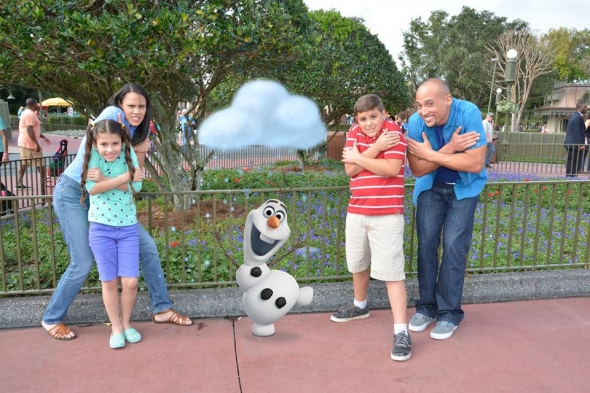
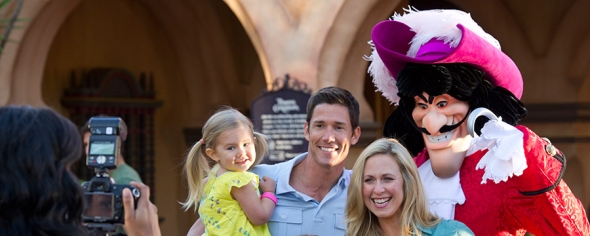
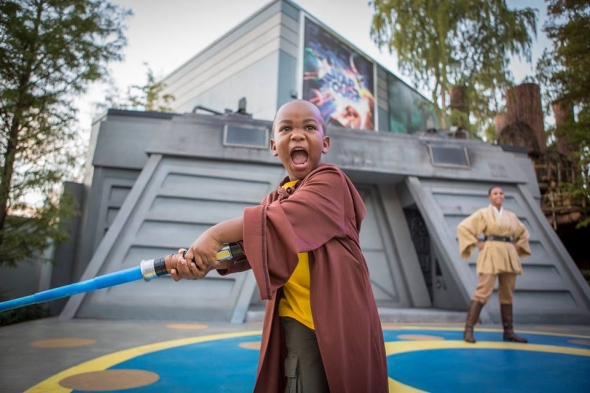
Add new comment